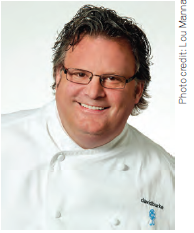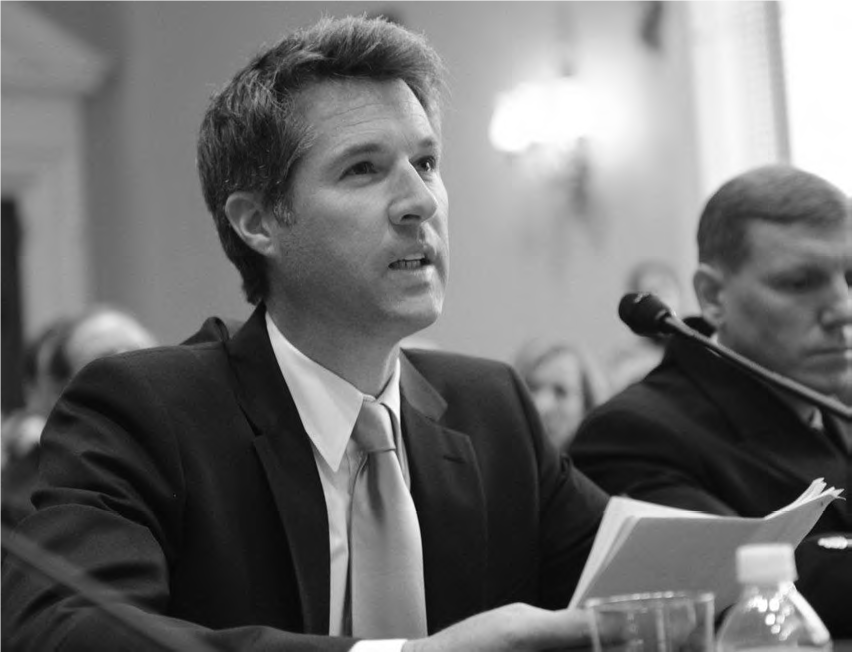In the restaurant business, necessity isn’t always the mother of invention. More often, reality is. When Rudy Carrera and Andy Dinic opened the doors at Mosaico in 2005, they envisioned it as being trendy and high-concept, with an unflinching Northern Italian menu—a slice of SoHo transported to Rte. 22 in Mountainside. Good reviews and a loyal clientele from their previous place (an Italian bistro in Springfield) helped get the longtime partners off to a roaring start in their new digs. But when the air went out of the economy a couple of years later, they had to rethink their hard line on Northern Italian in order to maintain Mosaico’s bottom line. Their solution was to fully embrace the meaning of  Mosaico. “A mosaic is made up of a thousand little details that are individually beautiful and of high quality,” says Carrera. “The artist assembles them to form a complete picture. We just reassembled some of the pieces.”
Mosaico. “A mosaic is made up of a thousand little details that are individually beautiful and of high quality,” says Carrera. “The artist assembles them to form a complete picture. We just reassembled some of the pieces.”
The menu morphed into what Carrera describes as Northern Italian with a twist, and it’s the twist that has kept the customers coming back. The Mosaico staff noticed that, as times became increasingly uncomfortable, their regulars started asking for familiar “comfort” foods ranging from Bolognese and carbonara dishes to pizza and burgers. So Dinic and Carrera began sneaking these items into the menu, or at least letting diners know that the kitchen could whip up almost anything they wanted, on the spot, made to order. “The economy forced us to become more flexible, more nimble,” says Dinic. “Our customers appreciated that. They always said, ‘We come here because we know it’s always good.’ As long as we could maintain our standards of service, quality and creativity, we felt that we were being true to the original concept.” Mosaico’s 2011 menu still leans heavily toward modern and traditional Northern Italian cuisine.
The signature dish, Veal Mosaico, a creation of chef Luis Romero (who has been cooking for Carrera and Dinic for more than a decade) is a scallopine layered with portabella mushrooms, roasted peppers and gorgonzola, in a brandy brown sauce, served with red potatoes on a bed of arugula. Another standout item is the French cut grilled pork chop. It has an entirely different thickness than what New Jersey restaurant-goers are probably used to. It’s never dry, even when ordered well done. Mosaico has also carved out a sterling reputation as a place to enjoy the bounty of the ocean. There are always at least two fish specials on the menu, even at lunch. Regulars swear by the crab cakes and, according to Carrera, the seafood salad rivals prosciutto and melon as their most popular appetizer. Grilled calamari is not on the menu, but is listed among the specials almost every day. Fish and shellfish are delivered each morning, so there’s an excellent chance that what comes to the table was swimming somewhere the previous day. The crowd at Mosaico is a mosaic in and of itself. At midday, four out of five tables appear to be business lunches. Some tables tear through their meals, while others linger well
creation of chef Luis Romero (who has been cooking for Carrera and Dinic for more than a decade) is a scallopine layered with portabella mushrooms, roasted peppers and gorgonzola, in a brandy brown sauce, served with red potatoes on a bed of arugula. Another standout item is the French cut grilled pork chop. It has an entirely different thickness than what New Jersey restaurant-goers are probably used to. It’s never dry, even when ordered well done. Mosaico has also carved out a sterling reputation as a place to enjoy the bounty of the ocean. There are always at least two fish specials on the menu, even at lunch. Regulars swear by the crab cakes and, according to Carrera, the seafood salad rivals prosciutto and melon as their most popular appetizer. Grilled calamari is not on the menu, but is listed among the specials almost every day. Fish and shellfish are delivered each morning, so there’s an excellent chance that what comes to the table was swimming somewhere the previous day. The crowd at Mosaico is a mosaic in and of itself. At midday, four out of five tables appear to be business lunches. Some tables tear through their meals, while others linger well  into the afternoon. In the evenings, it’s a blend of young and old, family dinners and romantic twosomes, and a fair number of business people.
into the afternoon. In the evenings, it’s a blend of young and old, family dinners and romantic twosomes, and a fair number of business people.
The restaurant is also a popular spot for private parties. According to Dinic, that is how many people discover Mosaico. He also estimates that, at any given time, about 40 percent of the faces that come through the door are familiar ones. In an era where customer loyalty is key, that is a very healthy number. The look of Mosaico is best described as a blend of modern and traditional. High ceilings in the dining room create a feel of openness and cut down on the noise, and there is a cozy lounge area that makes waiting for tables a very civilized experience. Mosaics fashioned from antique tiles that once graced buildings in Italy serve to soften the decor and add color—and also inspired the restaurant’s name. Indeed, at first the two owners could not agree on a name. It was their interior designer who suggested Mosaico.
Ultimately, what people appreciate most about Mosaico is not what’s inside the walls, but what’s inside the people who work there. From the owners to the kitchen and wait staff— right down to the busboys—there is a genuine feeling of family. And that feeling is extended to the people who patronize Mosaico. Carrera says that he and Dinic work hard every day to keep their employees focused on the experience they deliver to customers—and to treat them the way they would like to be treated if they were sitting down to a great meal. “As much as the quality and consistency of the food, it’s the personal attention and service that defines Mosaico,” says Dinic. “When you’re here you really feel like you’re at home,” adds Carrera. “Only the food is better and you don’t get stuck doing the dishes.”








Gourmet Food Trucks Go Full Throttle
Early morning. My friend, Pam, jumps off the ferry at Pier 17. As she scoots up Wall Street, she stops at a steaming cart to purchase the “best oatmeal in the world.” Next stop is a fresh fruit purveyor for just squeezed orange juice. Then on to another truck to buy “phenomenal” coffee. Breakfast in hand in only three minutes—a lot quicker than the corner diner—she heads up to catch the #6 subway. “I love buying food from these trucks,” she enthuses. Pam is an elegant woman in her 60s with high standards. She enjoys good food and dresses impeccably. So what is she doing ingesting food-on-the-fly (and from the street, no less)? My first reaction: Inoculate me…or at the very least pass the Tongue Purell! But since observing Pam grab food on the run that morning, I’ve noticed that food trucks have become ubiquitous, quite the thing and even chic on both sides of the Hudson. In the immortal words of Jimmy Durante, “Everybody’s getting in on the act.”
In his televised Bobby Flay’s Throwdown!, Iron Chef Bobby Flay has challenged to culinary cook-offs—and lost to—a number of food truck vendors. The New York Times food section regularly mentions these popular gourmet gypsies, and how and where to locate them. Zagats’ blog has launched a Food Truck Finder, providing parking location, reviews and even ratings of dozens of trucks—which is amazing since it didn’t include the popular Rickshaw Dumpling Truck, Kimchi Taco Truck, or King of Falafel. Even Food Network celebrity chef Tyler Florence has joined the movement, hosting The Great Food Truck Race, a culinary road show in which seven food trucks from California to Texas vie to be the most successful and win a $50,000 prize. Street food is older than a Babylonian bazaar. So what is creating this present-day proliferation of mobile food vending businesses? From Portland Oregon (600-plus trucks) to Austin, Texas, (more than 1,000), the mobile food business seems to be gaining momentum. It started on the West Coast (Los Angeles had food trucks as far back as the 1940s) and has headed East. Recently, Newsweek devoted an entire page to a wildly popular taco truck in L.A. Being in-the-know about a new restaurant, art installation or trend feeds the pop-up culture of the 3rd millennium, where businesses come and go in a matter of weeks. Often aided by social networks, a movable feast in a truck has become something for foodies to watch, follow, friend and tweet. Pam, my commuting friend, is no exception. She adores the thrill of discovery and being in on something new, delicious and personal.
KING OF QUEENS Krista, a chic young New Yorker, often grabs her dinner from King of Falafel in Astoria, Queens on the way home from her sales and marketing job. She says the very personal aspect of dining “a la cart” lends added appeal to the experience. “A huge part of what makes it so great are the people,” Krista explains. “There is always a long line of ‘Astorians’ of all ages and ethnicities waiting for the consistently delicious food. It’s fun to listen to the banter and the guys that work the cart are great. Oftentimes they give me some fresh falafel to munch on while I wait for my order of piles of marinated chicken and lots of tahini. And they tend to call me sweetie or sweetheart, which is actually kind of charming coming from them.” Not every food aficionado is on board with the truck trend. Once when the subject was raised, Mimi Sheraton, the former New York Times food critic, demanded to know “where the hell do you eat” the food? How about at the office, on a bench, or whatever conveyance takes you home? Since being inspired by Pam’s culinary trek up Wall Street, I have shared a Rickshaw Truck Hudson Valley Peking duck dumpling with my friend Sugie on the high seas (aka the Seastreak Ferry). I’ve even managed to carry a Dessert Truck sublime chocolate bread pudding all the way home before devouring it.
THE WHEEL DEAL Who are these enterprising mobile food vendors? Culinary school grads find the trucks a low-cost way to start a food following. Whereas opening a restaurant with rent and renovation might cost over $1 million, outfitting a gourmet food truck will cost between $75,000 for a used one and $200,000 for brand spanking new. New Jersey chef Adam Sobel purchased, outfitted and decorated his vegan food “Cinnamon Snail” truck for $26,000—acquiring the
used truck and supplies through Craigslist and paying his artistic and electronically savvy friends with free food. He has since upgraded the truck with $14,000 worth of improvements. Some restaurants wanting to deliver their food brand to other neighborhoods have started fleets of mobile food vendors. Rickshaw Dumpling, with a brick and mortar restaurant on West 23rd Street in New York, recently added another truck to service its curbside fans. On the other hand, some trucks—Dessert Truck and Cupcake Stop to name a couple—have actually engendered flagship restaurants. So you’re thinking of running a food truck? Thinking it might be fun, cheap and easy? Not so fast. In addition to the sometimes 90-hour-a-week time commitment, roadblocks and speed bumps include municipal bureaucracies with hard-to-obtain permits and licenses, monthly health inspections and police harassment. Also, strict and biased parking restrictions—such as parking too close to a crosswalk—can plague an enterprising food truck operator. As a result, the Street Vendor Project, an unofficial union of vendors, was formed as part of the Urban Justice Center in New York. To raise money to advocate for all street vendors, they initiated the Vendy awards, which Mario Batali calls “the Oscars for food for the real New York.”
JERSEY DRIVERS Gourmet trucks have started pulling into towns across New Jersey, too. However in many places restrictive ordinances can discourage the mobile food business. Sobel, a native of Red Bank, with a kitchen there, spent endless hours earlier this year trying to convince borough officials to carve out a spot where he (and others) could sell food near his home. During the warm-weather months, his Cinnamon Snail has a home every Sunday at the Red Bank Farmer’s Market. Jersey City and Hoboken are home to a number of trucks offering interesting fare. The aforementioned Cinnamon Snail, Two Pitas in a Pod, and the Taco Truck are among the more popular. In the highly competitive food business, one might surmise there is cutthroat competition or turf wars, but in fact there exists camaraderie and mutual respect among the mobile vendors. Indeed, they often swap meals for variety and friendship. Lev Ekster, the Cupcake Stop truck entrepreneur, opted out of law, hired some great bakers and started the first mobile cupcake shoppe. In less than two years, his cupcakes won the Food Network’s Food Feud for Best Cupcake. With a bakery in Montclair, a newly opened shop in Greenwich Village and a truck that ventures into Manhattan each day, Ekster seems to have all the bases covered. If you work in the city, you can even preorder cupcakes for the office and pick them up at his Twittered location. How tweet it is.
Anguilla… Served Up Family Style
My snow shovel is hung in the work shed with care. When St. Nicholas comes, well, I just won’t be there. Nor will Ellie, my wife, who by mid- December is already winter-weary. Have I mentioned our three almost-grown offspring? They won’t be there, either. The White Christmas of which we all dream is the white that we so fondly remember from the sugar sand beaches of Anguilla, down in the Caribbean. For that is exactly where we’ll be over the Christmas/New Year holiday. Furthermore, we’re all looking forward to a present free Christmas. You heard me. No Christmas presents! For the second year in a row, we are happily swapping center-city shopping—with its canned Christmas carols, its street corner ding-a-ling Santas, its life-threatening escalators and all those green/red/green-again traffic lights (and still we don’t budge)— for a tropical sunrise by our utterly beautiful pool. Or perhaps a pre-breakfast snorkeling expedition to watch the lobster lolling in the deep just off our private beach. Our 20-year-old pre-law genius puts it this way: “Dad definitely does not need another Hermes necktie, Mom does not need another silk scarf and no one in this house needs another cashmere anything.” Miss 18 and Worldly Wise says, “Christmas on a beach and under a palm tree? Heaven!” Last and anything but least, our 16-year-old Wimbledon hopeful says Christmas afternoon men’s doubles tennis is, like, “Crazy.” How my family came to opt out of that most traditional of American holidays
Furthermore, we’re all looking forward to a present free Christmas. You heard me. No Christmas presents! For the second year in a row, we are happily swapping center-city shopping—with its canned Christmas carols, its street corner ding-a-ling Santas, its life-threatening escalators and all those green/red/green-again traffic lights (and still we don’t budge)— for a tropical sunrise by our utterly beautiful pool. Or perhaps a pre-breakfast snorkeling expedition to watch the lobster lolling in the deep just off our private beach. Our 20-year-old pre-law genius puts it this way: “Dad definitely does not need another Hermes necktie, Mom does not need another silk scarf and no one in this house needs another cashmere anything.” Miss 18 and Worldly Wise says, “Christmas on a beach and under a palm tree? Heaven!” Last and anything but least, our 16-year-old Wimbledon hopeful says Christmas afternoon men’s doubles tennis is, like, “Crazy.” How my family came to opt out of that most traditional of American holidays —Christmas complete with jingle bells and holly wreaths, with fruit cake and office parties and retail hysteria—is a tale worth telling. And even more worth hearing. Actually, the lion’s share of credit goes to my brother-in-law, Harvey, my wife’s brother, father of a lissome 15-year-old daughter and a bruiser of an 18-year-old all-A’s fullback who is currently weighing bids from half a dozen ivy-covered colleges. Harvey and my sister-in-law, Liz, live in Chicago, where winter is nothing to joke about. Two years ago Harvey packed his nearest and dearest off to the pint-size Caribbean island of Anguilla for the Christmas/New Year holidays. His enthusiasm for that experiment knew no bounds. “And we all loved it,” he crowed on the phone. “Next year you and Ellie and the kids are coming too.” I was not an immediate pushover. “I don’t know…two weeks of hotel living…I’m not so sure.” “But it’s not hotel living. We leased a villa! I’m e-mailing you pictures. Just take a look.”
—Christmas complete with jingle bells and holly wreaths, with fruit cake and office parties and retail hysteria—is a tale worth telling. And even more worth hearing. Actually, the lion’s share of credit goes to my brother-in-law, Harvey, my wife’s brother, father of a lissome 15-year-old daughter and a bruiser of an 18-year-old all-A’s fullback who is currently weighing bids from half a dozen ivy-covered colleges. Harvey and my sister-in-law, Liz, live in Chicago, where winter is nothing to joke about. Two years ago Harvey packed his nearest and dearest off to the pint-size Caribbean island of Anguilla for the Christmas/New Year holidays. His enthusiasm for that experiment knew no bounds. “And we all loved it,” he crowed on the phone. “Next year you and Ellie and the kids are coming too.” I was not an immediate pushover. “I don’t know…two weeks of hotel living…I’m not so sure.” “But it’s not hotel living. We leased a villa! I’m e-mailing you pictures. Just take a look.”
And within minutes pictures, as if lifted from  Architectural Digest, filled my laptop screen. What was not to love? Sea Villa overlooking Long Bay. A white stucco house sequestered by palm trees. A sparkling infinity pool bordered by white chaises heaped with brilliant blue pillows. Our very own private beach. The interior views were no less seductive. An acre of bed in the master bedroom with a white marble, sky-lit bathroom that was bigger than most peoples’ living rooms. Arching over all was the bluest of skies, dipping down to join an even bluer sea. “And the beauty of it is, a staff of three comes with the house. No cooking, no cleaning, breakfast in bed or by the pool or wherever you choose. Doug, this is one deal you can’t pass up. Next year,” he vowed. “We’ll all go.” It’s true I had to do a little strong-arming when I first broached the idea. From the kids came the usual protests: ski trips, Broadway tickets, parties of all kinds. But I held my ground. “Your cousins loved it,” I said. “We’re going to try it. How many more all-together family Christmases do we have?”
Architectural Digest, filled my laptop screen. What was not to love? Sea Villa overlooking Long Bay. A white stucco house sequestered by palm trees. A sparkling infinity pool bordered by white chaises heaped with brilliant blue pillows. Our very own private beach. The interior views were no less seductive. An acre of bed in the master bedroom with a white marble, sky-lit bathroom that was bigger than most peoples’ living rooms. Arching over all was the bluest of skies, dipping down to join an even bluer sea. “And the beauty of it is, a staff of three comes with the house. No cooking, no cleaning, breakfast in bed or by the pool or wherever you choose. Doug, this is one deal you can’t pass up. Next year,” he vowed. “We’ll all go.” It’s true I had to do a little strong-arming when I first broached the idea. From the kids came the usual protests: ski trips, Broadway tickets, parties of all kinds. But I held my ground. “Your cousins loved it,” I said. “We’re going to try it. How many more all-together family Christmases do we have?”
To my astonishment, Ellie put up no resistance at all. “We should give it a try,” she said—a tribute, I suspected, more to her brother’s judgment than to mine. “But what about the cost?” “Actually, we’ll save money,” I told her. “No Christmas presents.” And so it was. To call last year’s Christmas/New Year holiday a success is the understatement of the century. This year will be even better because we know just what to expect. Sea Villa sits on its own three acres of landscaped turf. When I close my eyes I see bougainvillea, palm trees, blue-blue sky and a luminous slice of Caribbean sea in the midst of which sits 7,000 square feet of unabashed luxury. Ellie and I have one master suite, Harvey and my sister-in-law have the other master suite. The cousins will be sharing the other four bedrooms, each with a palatial bath. It is not, to put it mildly, boot-camp living. Our days will be spent in sinful bliss.
sinful bliss.
We’ll certainly be snorkeling every day, and if we’re lucky, we’ll dine at night on the lobsters we spear that very afternoon. We’ll have plenty of killer-family tennis. Sea Villa comes with all privileges on the adjacent 18-holf golf course, designed by Australia’s great White Shark, Greg Norman. Which translates into a round or two of killer-family golf. Last year we celebrated Christmas at St. Andrew’s Anglican Church, where we were welcomed like long-lost friends. It was in a mood of celebratory joy that we joined the church choir, sending our Hark the Herald Angels Sing floating through the open windows to drift out across the incredibly blue waters. As of now, it’s yet to be decided whether we will all go out for Christmas dinner—a tempting option since Anguilla is blessed with some truly wonderful owner/chef restaurants. Last year we celebrated Christmas at Veya Restaurant, a very special gem, hidden in a tropical forest.
The food and the service matched the best of anyplace we’d ever dined and the outdoor, candlelit ambiance struck exactly the right note of family holiday celebration. This year, who knows? There’s an undercurrent building for Christmas dinner at home, meaning on the terrace at Sea Villa, where the staff will spoil us outrageously and we can top off the evening with a midnight swim. We’ll see. If you’re wondering, for the most part we stuck to our iron rule of no Christmas presents. But if truth be told, some (whose names I won’t mention) escaped and found their way, like bloodhounds on the scent, to one of the island’s several ZaZaa boutiques. It specializes in island jewelry, beachwear, evening what-have-you’s and the female consensus in our household was that it was well worth the price of the excursion. Last year we met several American families who have made Anguilla their new home base. That’s not for us, at least not yet. For the moment, with school tuitions stretching off beyond the far horizon, we’re content with our holiday pilgrimage. It’s the best White Christmas that Irving Berlin never dreamt of—the white, white sands of Sea Villa and a family holiday that tops even the finest of partridges in the finest of pear trees, on-island or off.

The Sands opens its first U.S. hotel outside Las Vegas… right in New Jersey’s backyard
If you build it, they will come. From the moment Las Vegas Sands Corp. began mapping out plans for a casino resort on the 1800-acre site of the old Bethlehem  Steel plant in Pennsylvania, this was the strategy for attracting residents of Northern and Central New Jersey. Initially, the Sands had to market to New Jerseyans with the gaming-industry version of one hand tied behind its back. When the property first opened its doors in the spring of 2009, it offered no table games and the 302-room hotel was still on the drawing board. The license for table games came through that winter, at which point the company began constructing the hotel. It was completed this past spring— on budget and on time, a rarity in this business. With the 1996 demolition of the venerable Sands in Las Vegas, the Bethlehem operation is currently the only one in the U.S. that bears the Sands name. Walking into the Sands Bethlehem Casino Resort, you know you’re not in Vegas anymore. Amidst all the noise, light and energy, the casino manages to project a more relaxed, down-to-earth feel. According to Las Vegas Sands President and Chief Operating Officer Michael Leven, that was the plan from Day One. “We didn’t want to bring Las Vegas to the Lehigh Valley,” he explains. “No one’s betting $25,000 a hand here. We wanted something smaller and friendlier. The casino isn’t glitzy. It’s welcoming and comfortable. And the restaurants cover a wide range of price points.” Those restaurants are an important part of the draw. They include a traditional Irish pub, an outpost of New York’s Carnegie Deli, the requisite buffet, and three Emeril Lagasse creations—Emeril’s Chop House, Emeril’s Italian Table and BAM
Steel plant in Pennsylvania, this was the strategy for attracting residents of Northern and Central New Jersey. Initially, the Sands had to market to New Jerseyans with the gaming-industry version of one hand tied behind its back. When the property first opened its doors in the spring of 2009, it offered no table games and the 302-room hotel was still on the drawing board. The license for table games came through that winter, at which point the company began constructing the hotel. It was completed this past spring— on budget and on time, a rarity in this business. With the 1996 demolition of the venerable Sands in Las Vegas, the Bethlehem operation is currently the only one in the U.S. that bears the Sands name. Walking into the Sands Bethlehem Casino Resort, you know you’re not in Vegas anymore. Amidst all the noise, light and energy, the casino manages to project a more relaxed, down-to-earth feel. According to Las Vegas Sands President and Chief Operating Officer Michael Leven, that was the plan from Day One. “We didn’t want to bring Las Vegas to the Lehigh Valley,” he explains. “No one’s betting $25,000 a hand here. We wanted something smaller and friendlier. The casino isn’t glitzy. It’s welcoming and comfortable. And the restaurants cover a wide range of price points.” Those restaurants are an important part of the draw. They include a traditional Irish pub, an outpost of New York’s Carnegie Deli, the requisite buffet, and three Emeril Lagasse creations—Emeril’s Chop House, Emeril’s Italian Table and BAM , aka Burgers and More by Emeril. For nourishment on a budget, a food court offers everything from South Philly cheese steaks to pizza to pan-Asian fare, as well as some healthier choices. The next big thing for the Sands is a shopping mall that is slated to contain more than 30 retailers. It will be accessible directly from the casino floor. “Like other Sands properties, this is an integrated destination resort,” says Leven. “We’ll offer a lot of variety at this facility. There will be more than enough for non-players to do, but it will never be overwhelming. This is a nice town and we’ve built a nice place.” The rooms in the new hotel are terrific. Comfortable and understated, yet well-appointed, they are testament to the high precision with which casino people are able to match
, aka Burgers and More by Emeril. For nourishment on a budget, a food court offers everything from South Philly cheese steaks to pizza to pan-Asian fare, as well as some healthier choices. The next big thing for the Sands is a shopping mall that is slated to contain more than 30 retailers. It will be accessible directly from the casino floor. “Like other Sands properties, this is an integrated destination resort,” says Leven. “We’ll offer a lot of variety at this facility. There will be more than enough for non-players to do, but it will never be overwhelming. This is a nice town and we’ve built a nice place.” The rooms in the new hotel are terrific. Comfortable and understated, yet well-appointed, they are testament to the high precision with which casino people are able to match amenities with their target audience. Plenty of luxurious touches, but nothing over-the-top. The smallest room measures 400 square feet. All have 42-inch HD flat-screens, glass-enclosed showers and free in-room wireless access, and include a continental breakfast on the house. So who’s filling those rooms? When the property first opened, a little more than a third of the folks making the trek to Bethlehem were from North and Central New Jersey. Once table games were added, that number started climbing steadily—as did the number of players coming from New York City on a seemingly unbroken stream of back-and-forth buses. Not to say the slots aren’t active. On the contrary, the Sands took in $1 million more in July of 2011 than in July of 2010 from slot-machine play. Pulling New Jerseyans west from their bedroom communities is no mean feat. So far, so good on that account. Keeping them coming will be a constant challenge. There is competition from the south in Atlantic City— although it’s an additional hour’s drive—and, of course, the Big Apple beckons to the east. Long-term, it means offering more improvements and attractions to keep consumers and conventioneers coming. Of course, that’s always been part of the game plan. As Leven likes to say, “The status quo is a prescription for failure.”
amenities with their target audience. Plenty of luxurious touches, but nothing over-the-top. The smallest room measures 400 square feet. All have 42-inch HD flat-screens, glass-enclosed showers and free in-room wireless access, and include a continental breakfast on the house. So who’s filling those rooms? When the property first opened, a little more than a third of the folks making the trek to Bethlehem were from North and Central New Jersey. Once table games were added, that number started climbing steadily—as did the number of players coming from New York City on a seemingly unbroken stream of back-and-forth buses. Not to say the slots aren’t active. On the contrary, the Sands took in $1 million more in July of 2011 than in July of 2010 from slot-machine play. Pulling New Jerseyans west from their bedroom communities is no mean feat. So far, so good on that account. Keeping them coming will be a constant challenge. There is competition from the south in Atlantic City— although it’s an additional hour’s drive—and, of course, the Big Apple beckons to the east. Long-term, it means offering more improvements and attractions to keep consumers and conventioneers coming. Of course, that’s always been part of the game plan. As Leven likes to say, “The status quo is a prescription for failure.”
The easy questions are often the hardest to answer.
We asked a group of area experts & celebrities to weigh in on the really important ones… Am I good enough to sing professionally?

Anthony Laciura: In a sense, it would be simpler to answer the question Am I good enough to be a doctor or a lawyer? Often someone has a voice, but it’s not as endearing to the listener as they think. To determine whether someone has a sound special enough to build a career around, it takes a minimum of a year with at least one voice lesson a week. Professional singers have to learn how the body works and how to rely on their senses, how to keep an even pressure of breath so that the vocal chords vibrate at exactly the same rate. Remember, you’re dealing with a part of the anatomy that’s the size of a dime. It takes great patience on the part of student and teacher. I’ve been involved with singers who had really ugly voices when they began, yet through sheer will and study built good, long careers. Is it ever too late to start a professional singing career? There’s always an exception, but my gut reaction would be that if you’ve hit 50 and haven’t done anything yet, you might not possess the physical strength and stamina to launch a singing career. Anthony Laciura has performed as a tenor with the Metropolitan Opera for more than 25 years. His talent for playing character roles has won him an entirely new audience as a cast member of the HBO series Boardwalk Empire. Anthony plays Eddie Kessler, right-hand man to power broker Nucky Thompson. 
Why am I always stuck in traffic? Bernie Wagenblast: The short answer is “because you live in New Jersey.” There are over five and a half million licensed drivers in our state and sometimes it seems as if all of them are trying to get to the same place you are! When you consider there have been few new highways added since the 1970s it’s probably no surprise traffic often is jammed. While you can’t totally avoid traffic, there are some simple steps you can take to minimize the delays. First, and most important, collect as much info as you can before you leave on trips of over an hour and, if possible, continue to do so while you’re traveling. Some of the better GPS units will warn you about congestion. There are a number of websites you can check before you go that will alert you to accidents, construction and even how fast traffic is moving. On some you can even look at traffic cameras to see for yourself how crowded the roads are. You can also dial 511 for traffic updates—not just in Jersey, but in New York and Pennsylvania. Second, most people know only one way to get where they’re going. Regardless of the length of your trip, always have alternate routes in your mind. Google Maps is one of the sites that offers alternative routes—pick the one you like, but print out the others in case you have to divert. If you hit a wall of traffic, you can switch to Plan B or Plan C without getting angry or panicking and getting lost.
Bernie Wagenblast specializes in transportation communications. He began as one of the original reporters for Shadow Traffic in 1979, and today you can hear Bernie’s voice on the trams at Newark and JFK Airports, and throughout the New York City subway system.
 What should I order for dinner? David Burke: Always ask to hear about the specials. Are they seasonal? Do the match the weather? Are they really special? I was at an Italian place one night and they had 15 specials. To me that’s not special. There are certain things I find irresistible. Peking Duck. When I see that on a menu I automatically order it, even if I’m not in a Chinese restaurant. Stone crab with mustard sauce. Paella, but only at a really good place. I love Florentine ravioli with the spinach and the poached egg. In terms of seasonal items, you can’t go wrong with Copper River salmon or shad roe in the spring, and pheasant and venison around the holidays. And truffles when they first hit the season. If you are less adventurous and looking for reliable, a good restaurant should always do the simple things well—Caesar salad, roasted chicken, crab cakes, omelets, bread. Chef David Burke knows his way around a menu. He owns Fromagerie in Rumson, Primehouse in Chicago, Prime in Connecticut, and Fishtail, David Burke Townhouse and David Burke Kitchen at the James Hotel in Manhattan.
What should I order for dinner? David Burke: Always ask to hear about the specials. Are they seasonal? Do the match the weather? Are they really special? I was at an Italian place one night and they had 15 specials. To me that’s not special. There are certain things I find irresistible. Peking Duck. When I see that on a menu I automatically order it, even if I’m not in a Chinese restaurant. Stone crab with mustard sauce. Paella, but only at a really good place. I love Florentine ravioli with the spinach and the poached egg. In terms of seasonal items, you can’t go wrong with Copper River salmon or shad roe in the spring, and pheasant and venison around the holidays. And truffles when they first hit the season. If you are less adventurous and looking for reliable, a good restaurant should always do the simple things well—Caesar salad, roasted chicken, crab cakes, omelets, bread. Chef David Burke knows his way around a menu. He owns Fromagerie in Rumson, Primehouse in Chicago, Prime in Connecticut, and Fishtail, David Burke Townhouse and David Burke Kitchen at the James Hotel in Manhattan.
Katie or Matt? Terry Schaefer: As a Today Show producer I marveled at Katie’s capacity to wing it, ever so intelligently, like the girl in school who borrows your notes and then gets a better grade on the test. But Matt’s style was more my own. He comes to the studio every morning precisely at 5 a.m., ensuring two full hours to prepare for the show. He walks onto the set impeccably dressed just before 7, carrying carefully edited notes and questions for each of his segments, clipped together in perfect order, from hard-news interviews to cooking segments. Katie would arrive later, sometimes much later, and often read producers’ notes and questions at the last minute. She’d scrawl her own notes next to theirs, borrowing a pen to write, ingesting and processing information with lightning speed. Frequently she challenged the structure of the show, calling the executive producer in the control room with very last-minute suggestions, then she’d slide into the anchor chair with seconds to spare. But when the cameras rolled, there they were, side-by-side, each ready in their own way to deliver the news of the day, on America’s number-one morning show. Their easy chemistry and mutual respect was real. They valued their differences, even relied on them to get the job done. Each was a genuine pleasure to work with. Terry Schaefer worked at NBC News for 26 years, 17 of those as a producer for the Today Show.
What is the difference between a $1,500 watch and a $15,000 watch? Samuel Friedmann: Design, materials, innovation and quality. The biggest cost of building a great watch comes before it is built. It’s in the blueprint. It takes two years and countless trips back to the drawing board to design a breathtaking timepiece. It takes 12 separate factories to make the components. Then they must be assembled into a work of art—a work of art that works. The finishing is done by hand, because a machine can’t “feel” when each tiny piece fits just right. When the watchmaker looks inside, he sees things like a solid-gold rotor, things that tell him this is a wonderful machine. When the consumer sees this watch that embraces the body, the beauty of the timepiece is obvious to the eye. Think of it as the difference between a house built by a good architect and a great one. Both look nice when they’re brand new. Only 10 years later will you  know which architect was great. Samuel Friedmann is President of Gevril Group. The Gevril name has been associated with museum-quality timepieces dating back to the 16th century.
know which architect was great. Samuel Friedmann is President of Gevril Group. The Gevril name has been associated with museum-quality timepieces dating back to the 16th century.
Do actors love to play wise guys as much as we love to watch them? Vincent Pastore: Absolutely. And not everybody can play a wise guy. You must do your research, know the character. Do you think Ron Howard or Henry Winkler could play the role? Chazz Palminteri, Pacino, DeNiro—they are true wise guys. Personally, I prefer no Dons in my organized crime movies. I like the lowlifes. In Donnie Brasco, Pacino played the lowlife role to a tee. I loved the last scene when he knew he was gonna get whacked. He put his jewelry, wallet, everything in the drawer. He told Johnny Depp, “I put my neck out for you, Donnie.” That was real loyalty. Omertà. The code of silence. I think the chivalry is what attracts the actors to those old wise guys that embrace Omertà. John Gotti might have been the last of the real wise guys. As a member of The Sopranos cast, Vincent Pastore created one of the most enduring wise guy characters in television history: Salvatore Bonpensiero, aka Big Pussy.
 Why am I not making my own pasta? Teresa Giudice: Given that gourmet pasta can run $7 a pound and more—and that it’s so simple to do— I don’t know why. There’s something magical about making it yourself. It does take a little more time and effort, but the reward is so, so worth it. When it comes to making pasta from scratch, you need to buy a decent machine (there are good ones for $30 and great ones for under $100) and use the same basic recipe with only two ingredients: flour and eggs. What determines the final product is how you cut it. For most pasta shapes, the dough should be as thick as a nickel. For ravioli, which overlaps at the edges, the pasta should be as thick as a dime. Two things to remember after you’re done: add salt to the water after it boils but before the pasta goes in…and make sure your sauce is done by the time the water comes to a boil. Fresh pasta cooks quickly! Teresa Giudice became a reality TV icon on Real Housewives of New Jersey…and is now an accomplished author. Her second cookbook—Fabulicious!—made the New York Times Best-Seller List.
Why am I not making my own pasta? Teresa Giudice: Given that gourmet pasta can run $7 a pound and more—and that it’s so simple to do— I don’t know why. There’s something magical about making it yourself. It does take a little more time and effort, but the reward is so, so worth it. When it comes to making pasta from scratch, you need to buy a decent machine (there are good ones for $30 and great ones for under $100) and use the same basic recipe with only two ingredients: flour and eggs. What determines the final product is how you cut it. For most pasta shapes, the dough should be as thick as a nickel. For ravioli, which overlaps at the edges, the pasta should be as thick as a dime. Two things to remember after you’re done: add salt to the water after it boils but before the pasta goes in…and make sure your sauce is done by the time the water comes to a boil. Fresh pasta cooks quickly! Teresa Giudice became a reality TV icon on Real Housewives of New Jersey…and is now an accomplished author. Her second cookbook—Fabulicious!—made the New York Times Best-Seller List.
 I’m 44. I’m single. What now? Norah Marler: Get comfortable with yourself; it’s okay to be single and at this time of your life it’s okay to be a little selfish. Enjoy some “me time” by doing all the things you haven’t been able to get to because you’ve been too busy giving your time to others. Perhaps you’ve been longing to go back to school or take dancing lessons, learn to ski or become a world traveler. Whatever your desires are, now is the time start living them. Then commit to the best interests of the person you love: You. Analyze your past, present and hoped-for future and develop a program for achieving that future. Make a list of what you want and what you need. Create a life plan that will fulfill your needs. It’s your life—create it as you wish, but you must follow a Think-It…Plan-It…Built-It blueprint. Norah Marler is 44 and has been single for many years. She is a passionate advocate for women’s health, safety and wellness, the author of No More Dating Pigs and the mind behind the nomoredatingpigs.com web site.
I’m 44. I’m single. What now? Norah Marler: Get comfortable with yourself; it’s okay to be single and at this time of your life it’s okay to be a little selfish. Enjoy some “me time” by doing all the things you haven’t been able to get to because you’ve been too busy giving your time to others. Perhaps you’ve been longing to go back to school or take dancing lessons, learn to ski or become a world traveler. Whatever your desires are, now is the time start living them. Then commit to the best interests of the person you love: You. Analyze your past, present and hoped-for future and develop a program for achieving that future. Make a list of what you want and what you need. Create a life plan that will fulfill your needs. It’s your life—create it as you wish, but you must follow a Think-It…Plan-It…Built-It blueprint. Norah Marler is 44 and has been single for many years. She is a passionate advocate for women’s health, safety and wellness, the author of No More Dating Pigs and the mind behind the nomoredatingpigs.com web site.
Before grabbing that little place in the city, there are a few things you need to know.
For many New Jersey residents, “having it all” means something more than a blissful suburban existence. It also includes having a small Manhattan apartment. In the chaos of our current economy, some Garden Staters—through skillful investing or trading down their now-empty nests to smaller houses—have turned this longstanding dream into a reality. The process is complicated, but it can be simplified by breaking it down into four decisions: finances, type of transaction, size, and location (probably in that order). And, of course, finding professionals who can help you to make each decision a realistic one. We’ll leave the money issues to you and your accountant. Just keep in mind that, in any real-estate transaction, you can expect to spend more than you planned to—and in Manhattan, you can depend on it. You’ll also want to investigate any tax advantages that might accrue to you as the owner of a condominium or co-op.
CO-OP VS. CONDO VS. RENTAL It’s worth mentioning here that, contrary to the situation in most American cities, co-ops are much more common than condos in Manhattan. One real estate broker, a specialist in co-op and condo sales, made a point of explaining that, all things being equal, condos provide a wider choice to the out-of-town owner, since many co-op boards will decline to approve buyers who want a pied-à-terre. Most board members will favor full-time residents, who are less likely to turn their keys over to a parade of friends who want to spend a weekend in the city. If you can’t find what you’re looking for in the price range you’ve established, you may want to explore a rental apartment instead. It often involves a lower total monthly outlay than a condo, but keep in mind that you’re not building any kind of equity as a tenant, and that Manhattan is rumored to have been an Algonquian name meaning “Island of Soaring Rents, Major Capital Improvements, and Two-Year (sometimes one-year) Leases.” If you or your spouse works in the city, there may be a way to write off part of the monthly rent as a business expense, but as a rule the tax advantages of renting are not as attractive as owning.
SIZE, LOCATION & FEATURES These are the “fun” decisions, less fraught with legal and financial issues and easier to figure out. The price of an apartment is determined by a combination of the square footage, location and amenities. The more you know about the value of each in the constantly shifting sands of New York City’s co-op, condo and rental market, the more bang you’ll get for your buck. The bells and whistles that drive up the price include having a doorman, a terrace, a non-closetsized kitchen and a good view. But you knew that already. Not everything, however, is intuitive to the out-of-towner. For example, discrepancies in prices between one-bedrooms and studios may not be overwhelming. Neighborhoods that seem on-the-fringe when you’re visiting the city may actually be on the cusp. And that Upper East Side neighborhood that used to be out of reach when you were twentysomething and just out of college? Well, there’s good news on that front, too. Manhattan has changed dramatically (Gothamites like to do everything dramatically) in the last 20 years. Areas like Tribeca, the Flatiron district, the Lower East Side, and the Meatpacking district—where most apartments were once cheap, but often of dubious quality and lacking in amenities—have become the hottest residential neighborhoods in town. Consequently, the Upper East Side, once the magnet for people of means looking for apartments, has become relatively reasonable. It’s one of six neighborhoods in the city that offers good deals, interesting features or a little of both: Wall Street: Numerous palatial old office buildings in the Financial District, abandoned by brokerage firms, have been converted to apartments.
is determined by a combination of the square footage, location and amenities. The more you know about the value of each in the constantly shifting sands of New York City’s co-op, condo and rental market, the more bang you’ll get for your buck. The bells and whistles that drive up the price include having a doorman, a terrace, a non-closetsized kitchen and a good view. But you knew that already. Not everything, however, is intuitive to the out-of-towner. For example, discrepancies in prices between one-bedrooms and studios may not be overwhelming. Neighborhoods that seem on-the-fringe when you’re visiting the city may actually be on the cusp. And that Upper East Side neighborhood that used to be out of reach when you were twentysomething and just out of college? Well, there’s good news on that front, too. Manhattan has changed dramatically (Gothamites like to do everything dramatically) in the last 20 years. Areas like Tribeca, the Flatiron district, the Lower East Side, and the Meatpacking district—where most apartments were once cheap, but often of dubious quality and lacking in amenities—have become the hottest residential neighborhoods in town. Consequently, the Upper East Side, once the magnet for people of means looking for apartments, has become relatively reasonable. It’s one of six neighborhoods in the city that offers good deals, interesting features or a little of both: Wall Street: Numerous palatial old office buildings in the Financial District, abandoned by brokerage firms, have been converted to apartments.
They feature high ceilings, great detailing, and virtually bomb-proof construction. Many have extraordinary harbor views. The neighborhood is safe, because there’s almost no activity down there after the offices close up in the evenings and on weekends. Great transportation, good values, peace and quiet—but you’ll be trekking to Chinatown for groceries. Battery Park City: Safe, serene, secluded and new—the oldest buildings only date to the mid-’80s. Self-contained, with stores, restaurants, doctors, and a movie theatre. There’s a yacht basin, should you choose to navigate back and forth across the Hudson. The negatives: getting anywhere else in Manhattan can be a chore, and, somehow, the grit and energy of Manhattan are muted, almost mallified (if not mollified). Chelsea: Between 14th and 23rd Streets, west of Sixth Avenue. Restaurants by the score, endless nightlife, lots of culture (music, dance, theatre, and one of the city’s biggest gallery scenes). The far western reaches are a bit isolated, and most of the bargains are gone, but you’re in walking distance of most of what makes it worthwhile to put up with the city. The Garment District/Flower District: Roughly, Sixth to Eighth Avenues, 23rd Street to 42nd Street. Until recently, a desolate stretch of loft buildings, factories, storefronts, and tenements. Largely rebuilt, including an eye-popping stretch of towers on almost every block of Sixth Avenue from 23rd to 34th Streets. Variable values, and the area retains distinct traces of funky, unsanitized, pre-war New York, but there’s easy access to the Flatiron, boasting one of the biggest groupings of topflight restaurants in the city, and the bright lights and theatres of Times Square. Tudor City: A little-known enclave overlooking the United Nations. Very safe, lovely parks, river views from some apartments. Walking distance to midtown, frequent buses to the Theatre District. A word from a broker who has done many deals here: caveat emptor—the apartments tend to be smaller than in other areas, and this is an older development—some of the units will need work. Nonetheless, the values are excellent and there is a distinctly Old World flavor that many find enchanting. The Upper East Side: Overbuilding, and the preference of many young singles for more exotic neighborhoods from Williamsburg to Harlem, has left a lot of empty apartments here. There’s no fire sale; prices have held steady, as landlords anticipate the economy’s resurrection, but you can negotiate a good deal if you do your homework. This is the famous Silk Stocking district, ancestral home to the rich and famous. Proximity to some of the world’s greatest museums, such as the Metropolitan, MOMA and the Guggenheim (although the Whitney is moving to the Meatpacking district), world-class restaurants, Central Park and, depending on how far east you go, river views.
DOLLARS & SENSE All well and good, but you’re still asking, “How much?” There’s no easy answer. However, speaking with various knowledgeable brokers, and checking the Real Estate section of The New York Times and the listings in Trulia you can come up with some ballpark figures. There is a large stock of condos—particularly studios and smaller one-bedroom—in areas that are neither too pricey nor too unappealing, that are listed for anywhere from $200,000 to $600,000. You can, of course, pay multiples of those prices for apartments with particular features, but that’s the range for the typical pied-à-terre in a fun and convenient neighborhood. Rents in the same neighborhoods for something decent start at around $2500 a month and skyrocket from there. To get a feel for the city, which seems to change overnight, link to blogs like Curbed NY, New York Condo or, for the statistically literate, UrbanDigs. But in the end, the best way to find your dream pied à terre is to put on some comfortable shoes and start walking. New York has always been a town for strolling, and that’s how you’ll find the true, and often not immediately evident, nature of its neighborhoods.
Ken Burns is an old soul with the face of a choirboy and a gift for storytelling. He is especially passionate about American history, and his need to know is contagious. For the past 30 years, Burns has been a fixture on public television. From his early one-hour films profiling such landmarks as the Brooklyn Bridge and Statue of Liberty to his monumental miniseries on the Civil War, World War II, baseball, jazz, our national parks and the American West, he has captivated audiences with the fruits of his meticulous research and his drive to document the history of America through the hearts and minds of those who actually lived it. With as many as six films in production at one time, Burns travels the country filming, researching, lecturing and fundraising—ever mindful of the grassroots appeal of his work. October 2 marks the start of his three-part opus Prohibition, the latest miniseries from Burns and his longtime creative team—including producer director Lynn Novick and screenwriter Geoffrey C. Ward. Award-winning entertainment journalist Judith Trojan caught up with Burns in his New Hampshire production office.
EDGE: Historian Stephen Ambrose once said that more Americans get their history from you than from any other source. Do you set out to educate the public about American history or does it go deeper than that?
KB: I don’t know what would be deeper than educating the American public, but my first impulse is more modest: I just want to tell a good story. Because these are stories in American history, and often stories that have been neglected by the distractions of an all-consuming media culture, I think they then become significant educational tools.
EDGE: Historical dramas like The King’s Speech are extremely popular and win Oscars. Why devote your career to documentaries and not docudramas or dramatic fiction?
KB: I’ve been interested in the power of what’s true—the drama in what was and what is—without any human interference. For me, it’s looking at things that actually happen, and I don’t feel the need to change them.
EDGE: Back in the day, films about American history were dry as toast and earmarked for educational markets. Why do you think your films have wide audience appeal?
KB: One of the big reasons is I’ve had the great good fortune for 30 years to work in public broadcasting, emphasis on the word public. They don’t interfere with the process; so I enjoy creative control—though we are dependent upon the kindness of philanthropists in corporate, foundation and governmental circles that complete our budgets. Once you’ve removed yourself from the hurly-burly of fashion and really evolve your own authentic style, then people begin to trust that.
EDGE: Your films transformed the genre and became stylistic benchmarks for historical documentaries.
KB: Well, I’m not interested in excavating the dates and facts of the past—the dusty, dry archaeology that has turned so many people off—but in what I’ve called an “emotional archaeology.” The logical world of the head doesn’t allow much room for passion. Yet we also know how dangerous those baser emotions can be that transform history into nostalgia—something I’m absolutely not interested in. The glue that holds together all of the dates and facts in my films is a higher emotional energy. I notice that the things that compel us most in life—the relationships of those closest to us, the work we’re proudest of, our faith, our patriotism— prove that often one plus one equals three. It’s that wonderful contradictory calculus that I think art pursues that I hope to touch on in my films.
EDGE: Are you driven by your own desire to learn about a subject?
KB: Another reason those historical documentaries were so dry is because it was somebody telling you something they already knew rather than, as I hope in my  films, a process of discovery. I’m drawn to a subject not because I know about it and want to show off that knowledge or want to tell people what they should know about the subject, but the exact opposite. I want to share my process of discovery. It’s “Hey, let me tell you this unbelievable story I just heard!”
films, a process of discovery. I’m drawn to a subject not because I know about it and want to show off that knowledge or want to tell people what they should know about the subject, but the exact opposite. I want to share my process of discovery. It’s “Hey, let me tell you this unbelievable story I just heard!”
EDGE: April 12th marked the 150th anniversary of the start of the Civil War, and 21 years have passed since you premiered your groundbreaking miniseries. Has your mindset about the war changed in any way?
KB: I made the film because I was convinced the Civil War was the most important event in our nation’s history. There is nothing in the last 21 years that changed my mind. All of American history is in some ways governed by those four horrible years when, in order to become one, we tore ourselves in two. It’s the traumatic event in the childhood of our nation.
EDGE: Seventeen years elapsed between your coverage of the Civil War and World War II—the latter in your powerful 2007 miniseries The War. Why so long an interval?
KB: I vowed after The Civil War that I would not do another film on war. It was just very hard and emotionally painful to do it. But towards the end of the ’90s, I learned two awful facts: one, that we were losing a thousand WWII veterans a day; and two, that many graduating high school seniors thought we fought with the Germans against the Russians in the Second World War. I was appalled. I felt, for the reason that we were losing our soldiers and our historical compass, that I had to dive back into the subject of war.
EDGE: After completing two huge projects examining wartime America, did you come away with any life-altering insights?
KB: War is an interesting and troublesome subject. Americans—indeed, human beings—always forget the painful consequences of a war once it’s over. We begin to drape it with bloodless gallant myth. I think it’s the obligation of the artist to try to remind people of what actually takes place, which is in and of itself paradoxical. You, of course, find horrific aspects of human behavior; but also, you see stunning examples of bravery and courage, friendship and devotion, and loyalty and love that you weren’t expecting. So war has become the place at which a much more intensified study of human nature can occur. I’ve now committed to making a film on the history of Vietnam; and this will consume me, in every sense of that word, for the next six years.
EDGE: Your films consistently shine a light on unsung heroes.
KB: Oh, most definitely. I think one of the reasons American history seems like castor oil to so many people is that it’s usually reduced to a sequence of Presidential administrations punctuated by wars. The more engaging history is when that top-down version is balanced with a bottom-up version. I’ve tried to tell our histories from the bottom-up. What was happening to the individual private— North and South—in the Civil War? And in The War, WWII is reflected essentially through the eyes of people from four American cities: Waterbury, Connecticut; Mobile, Alabama; Sacramento, California; and tiny Luverne, Minnesota.
EDGE: Doris Kearns Goodwin’s quote at the end of The Tenth Inning, your latest series on baseball, beautifully sums up why the game is so enriching for the human spirit. She reminds us that we achieve immortality through our memories of communal activities.
KB: It’s so interesting that, in a way, we achieve our immortality through the stories told by the people that come after us. We keep our parents and grandparents alive that way, and then we too become those parents and grandparents whose lives are kept alive by the stories of their children. These are hugely important things; and they become the essential way in which human beings communicate with one another, whether it’s in documentary films or newspaper articles or on the street corner or over the backyard fence. If you tell history as if it’s over the backyard fence, you’ll have everybody’s ear.
EDGE: You’re now the father of two very young daughters, as well as two adult daughters.
KB: Yes, and I just became a grandfather! So my big girl, my baby, just had a baby.
EDGE: Another girl?
KB: Of course! That’s what we’ve been able to grow in the Burns house.
EDGE: Has having four daughters and now a granddaughter influenced your choice of subjects at all? There’s definitely a link between your latest miniseries, Prohibition, and your 1999 film about woman suffrage, Not for Ourselves Alone.
KB: The professional decisions are completely separate, but one ignores the role of women at one’s peril. I’m sure that’s in some way born from my experience living with lots of women who helped and influenced me.
EDGE: When people think of Temperance and Prohibition, Carry Nation immediately comes to mind; but many other women played pivotal roles.
KB: Yes, it was wives who went to their pastors to complain about their drunken husbands. It was women who fought not only for Emancipation for the slaves and a woman’s right to vote, but for Temperance. The highest-ranked woman in the U.S. government, Assistant Attorney General Mabel Walker Willebrandt, prosecuted Prohibition violators. And women were instrumental as flappers in flaunting the law and thumbing their noses at it. So it’s a wonderful story, which no one ever tells. I hope our film has been able to tell a much deeper story that at its heart engages women. And maybe that is my daughters speaking to me somehow.
EDGE: Prohibition seems to be a story about many people behaving badly. Did you have certain preconceived notions that were upended by the time you completed your research?
KB: It’s less upended than how superficial our knowledge of Prohibition is. We think of gangsters and Model-T’s careening through rain-slicked Chicago streets and tommy guns flashing and flappers and all of that stuff. That’s in our film, and it’s a very exciting and dynamic aspect of Prohibition; but the first hundred years before Prohibition went into effect are as essential to why it happened as anything, and we detail that in our film. This is a film about single issue political campaigns that kind of metastasized with unfortunate, unintended consequences. It’s about the demonization of immigrants. It’s about smear campaigns during Presidential campaigns. It’s about a whole group that felt like they’d lost control of the country and wanted to take it back. And those themes speak directly to what’s going on today without us having to point arrows at it.
EDGE: You grew up in a left-wing family. Has that had any affect on your work?
KB: No. I’ve struggled really hard to speak to everyone: red state, blue state, young, old, black, white, male, female, gay, straight, whatever. I’m interested in speaking to all of my fellow citizens and saying, “These are wonderful stories.” In a country in which civil discourse has decayed, history is still the table around which many of us can agree to come together. And that’s why I’ve been consciously and decidedly apolitical in my films.
EDGE: What about the use of social media today to connect diverse individuals and communities? Do you use it?
KB: I don’t use it. I’m an old fuddy-duddy and work way too hard and really don’t have the time. Everything’s a doubleedged sword. I think when we see how it’s enabled us to bond with people struggling for freedom in North Africa and the Middle East, we see its positive results. When we see how our children are consumed by social media to the extent that they can’t lift their eyes from their computers or their handheld devices to take a walk out in nature, we understand the pernicious effects. So, it’s very important to understand that everything under the sun has both negative and positive aspects. It’s our responsibility to reconcile those differences.
EDGE: If you were to compare yourself to any notable person in American history, who would it be? Have you felt a special kinship with any of your subjects?
KB: I feel a spectacular kinship with Louis Armstrong, Abraham Lincoln and Jackie Robinson; those three people are the bees’ knees for me. Now, would I compare myself to them? Never! I’ve had the great good fortune to spend a lot of time with them in the work that I do; and I feel that I’ve gotten to know them, even though they’re dead and I have not met them. I try my best to channel—if that’s the right word—the best of them to my fellow citizens to remind us of our greatest possibilities rather than our worst. These are the messages of love that Louis Armstrong gave us, of perseverance that Jackie Robinson displayed, and the wisdom and poetry that Abraham Lincoln exhibited. I’m proud to live in a country that had those three individuals as citizens.
Editor’s Note: Judith Trojan has written and edited more than 1,000 film and television reviews and celebrity profiles for books, magazines and newsletters. Her interviews have run the gamut from best-selling authors Mary Higgins Clark, Ann Rule and Frank McCourt to cultural touchstones Carroll O’Connor, Judy Collins and Caroll Spinney (aka Big Bird). Judy most recently helmed the Christopher Awards, a program that for the past 62 years has honored feature films, TV/cable programs, and books for adults and children that “affirm the highest values of the human spirit.”
Bariatric Surgeons are the Latest to Get a (Mechanical) Hand in the OR
To the layperson, the melding of humans and machines sometimes seems like the stuff of science fiction. For Trinitas surgeons working with the da Vinci Surgical System, it’s just another day at the office. Now Trinitas can claim the NY Metro area’s first Robotic Bariatric Surgery program. “This program establishes Trinitas as a Center of Excellence for Robotic Surgery,” says Gary S. Horan, President/CEO of Trinitas Regional Medical Center. “It will draw patients from all over the region, as well as many from outside the region. Trinitas also becomes the place where bariatric surgeons will come to do their training.”

Who benefits from robotic bariatric surgery? Both surgeon and patient. According to Dr. Forrester, robotic bariatric surgery may open the path to good  health to patients who in the past might have been rejected as a bariatric surgical candidate. Higher-weight patients are more challenging to operate on because their body structure places limitations on conventional laparoscopic instruments. The da Vinci diminishes the problem by giving the surgeon greater control and maneuverability. The da Vinci is also good for revisional surgeries, where a bariatric patient needs a procedure redone, or must switch from a band to a bypass. Where will robotics take bariatric surgeons in the future? Anywhere they want. Indeed, seated inside the da Vinci pod and controlling the camera, a surgeon at Trinitas could theoretically perform a bypass on anyone, anywhere. This could have interesting implications for remote parts of our own country, where obesity is epidemic and trained surgeons are few.
health to patients who in the past might have been rejected as a bariatric surgical candidate. Higher-weight patients are more challenging to operate on because their body structure places limitations on conventional laparoscopic instruments. The da Vinci diminishes the problem by giving the surgeon greater control and maneuverability. The da Vinci is also good for revisional surgeries, where a bariatric patient needs a procedure redone, or must switch from a band to a bypass. Where will robotics take bariatric surgeons in the future? Anywhere they want. Indeed, seated inside the da Vinci pod and controlling the camera, a surgeon at Trinitas could theoretically perform a bypass on anyone, anywhere. This could have interesting implications for remote parts of our own country, where obesity is epidemic and trained surgeons are few.
The da Vinci system that is utilized for bariatric procedures is already on-site. It’s the techniques and training that are new to Trinitas. A team of surgeons from the hospital has completed the rigorous training involved in mastering the da Vinci robot, which is already used for minimally invasive surgeries in a number of specialties. For some of its training, the team had to fly to Maine. Of the three types of bariatric surgeries—gastric bypass, sleeve gastrectomy and gastric banding—that can be performed robotically, the bypass lends itself especially well to the da Vinci system, explains Glenn Forrester, MD, FACS, Director of Bariatric Surgery at Trinitas. The bypass requires the most fine suturing and the da Vinci allows for the exact placement of the sutures, he says. “Another significant advantage,” adds Dr. Forrester, “is that the surgeon controls the camera throughout the operation.  During a normal laparoscopic procedure, an assistant handles the camera. This gives surgeons more control over where their eyes are trained. Imagine wanting to look at something and having someone else controlling your eyes.” In a robotic procedure, the surgeon is removed from the side of the operating table. The standard operating team is around the patient. Above the patient cart is the robotic arm. There is one surgical assistant on hand to perform tasks like retracting and stapling.
During a normal laparoscopic procedure, an assistant handles the camera. This gives surgeons more control over where their eyes are trained. Imagine wanting to look at something and having someone else controlling your eyes.” In a robotic procedure, the surgeon is removed from the side of the operating table. The standard operating team is around the patient. Above the patient cart is the robotic arm. There is one surgical assistant on hand to perform tasks like retracting and stapling.
The surgeon operates remotely — with fingers manipulating ultra-responsive individual controls and feet working pedals that focus the camera and control energy to the devices. The surgeon views the procedure through a high-definition 3-D monitor. To perform robotic bariatric procedures, surgeons must receive training from da Vinci and training from Trinitas. It typically requires four days of training and observing procedures, and between 5 and 15 supervised procedures before a surgeon gets the green light to fly solo. On top of that, additional annual training is required, as the procedures and technology evolve. Is there a fear factor among patients when they hear that a robot will have a hand in the surgery? “Patients understand that it’s not a robot doing the surgery,” Dr. Forrester smiles. “The surgery is robotic-assisted. The da Vinci is only a tool.” Soon, he says, this will be viewed as just another instrument in the operating room. “Robotic bariatric procedures are safe and effective without altering the outcomes.” Any trepidation on the part of bariatric surgeons? “No,” says Dr. Forrester. “Surgeons have a technological side and the da Vinci lets us take our ability to help patients to a whole new level.”
Trinitas Is First in New Jersey to Offer New Image-Guided Breast Cancer Technology
 The term “guesswork” is not a particularly comforting one for early-stage breast cancer patients. Once a lumpectomy has been performed, the diagnosis confirmed and radiotherapy initiated, women want to know that radiation is going to the right place. Now they can check the doctor’s work for themselves. In June, Trinitas Regional Medical Center became the first cancer treatment facility in the state to offer breast cancer patients a radiotherapy technology called AccuBoost. Developed by Nucletron, a company headquartered in the Netherlands, AccuBoost enables doctors and patients to actually see the area receiving radiation treatment as it receives it. In other words, no guesswork. The system images the site where cancer was removed so that the surrounding breast tissue can be treated more accurately with boost-dose targeting. “AccuBoost utilizes real-time mammography to localize the treatment,” says Clarissa Henson, MD, Chair of Radiation Oncology at Trinitas (above). “This technology is far superior to the current standard of care treatment. On average, only 51 percent of the treatment area receives 90 percent of the dose when using the current standard of care. With AccuBoost, targeting is improved and a more effective dose of radiation is delivered to the tumor site.” With AccuBoost, a technician can position the applicator so that it delivers the therapeutic dose accurately and reliably, with limited radiation exposure to the skin. The dose is uniform over the portion of the breast that is being irradiated, which reduces unnecessary exposure of healthy tissue to radiation and enables patients to retain more undamaged tissue.
The term “guesswork” is not a particularly comforting one for early-stage breast cancer patients. Once a lumpectomy has been performed, the diagnosis confirmed and radiotherapy initiated, women want to know that radiation is going to the right place. Now they can check the doctor’s work for themselves. In June, Trinitas Regional Medical Center became the first cancer treatment facility in the state to offer breast cancer patients a radiotherapy technology called AccuBoost. Developed by Nucletron, a company headquartered in the Netherlands, AccuBoost enables doctors and patients to actually see the area receiving radiation treatment as it receives it. In other words, no guesswork. The system images the site where cancer was removed so that the surrounding breast tissue can be treated more accurately with boost-dose targeting. “AccuBoost utilizes real-time mammography to localize the treatment,” says Clarissa Henson, MD, Chair of Radiation Oncology at Trinitas (above). “This technology is far superior to the current standard of care treatment. On average, only 51 percent of the treatment area receives 90 percent of the dose when using the current standard of care. With AccuBoost, targeting is improved and a more effective dose of radiation is delivered to the tumor site.” With AccuBoost, a technician can position the applicator so that it delivers the therapeutic dose accurately and reliably, with limited radiation exposure to the skin. The dose is uniform over the portion of the breast that is being irradiated, which reduces unnecessary exposure of healthy tissue to radiation and enables patients to retain more undamaged tissue.
“The diagnosis of breast cancer is one of the mo st traumatic for any woman,” says Dr. Henson. “Being able to see treatment as it is delivered through this new technology helps patients be informed and involved in their care.” “Trinitas was the first cancer treatment center in New Jersey to offer Rapid Arc radiotherapy technology and now we are the first with AccuBoost,” adds TRMC President and CEO Gary S. Horan (right). “It’s another clear example of why Trinitas Comprehensive Cancer Center is a regional leader in cancer care.”
st traumatic for any woman,” says Dr. Henson. “Being able to see treatment as it is delivered through this new technology helps patients be informed and involved in their care.” “Trinitas was the first cancer treatment center in New Jersey to offer Rapid Arc radiotherapy technology and now we are the first with AccuBoost,” adds TRMC President and CEO Gary S. Horan (right). “It’s another clear example of why Trinitas Comprehensive Cancer Center is a regional leader in cancer care.”
Students begin each new school term with a review period. Should parents have one, too?
Studies show that children typically forget 20% of what they learn from the end of one school year to the start of the next. If only their parents retained knowledge that well! Indeed, at the start of each new school year, many grown-ups show the effects of “summer slide” more than their kids do. They forget the ironclad rules of student-parenting and, in some cases, overlook the fact that their offspring are becoming more capable and mature with each passing school year. Parental participation in a child’s education is encouraged and welcome. Different schools handle this in different ways, of course, but what they all have in  common is a bumpy back-to-school period where teachers, administrators, moms and dads can struggle to regain their bearings. Unfortunately, there’s no review period for parents. “Communication is always critical to a successful school opening,” says Nancy Leaderman,
common is a bumpy back-to-school period where teachers, administrators, moms and dads can struggle to regain their bearings. Unfortunately, there’s no review period for parents. “Communication is always critical to a successful school opening,” says Nancy Leaderman,
Upper School Principal at the Golda Och Academy, in West Orange. “The transition from the relaxed days of summer into a more structured daily experience can be challenging.” How does that challenge manifest itself? Occasionally, says Nat Conard, Headmaster at The Pingry School’s Martinsville campus, it often comes in the form of parents who have good intentions but unreal expectations. “Families at our school are very committed to getting their children the best possible education,” he explains. “The parents want the best for their kids.” Teachers across the state echo this sentiment. In fact, it’s important to note that many educators are parents themselves. They understand better than anyone the delicate balance required to provide a nurturing, healthy school environment—and to let kids find their own way. “We want students to be active participants in their education,” says Christine McCoid, Assistant Principal at Union Catholic Regional High School in Scotch Plains. Problems tend to crop up when parents overstep established boundaries. According to Monsignor Kevin Hanbury, Superintendent of Schools for the Archdiocese of Newark, that is sometimes the case when a school needs to discipline a student. “Parents have to be honest,” he says. “They have to acknowledge that their kids aren’t angels.” Msgr. Hanbury believes this mindset is part of the “cult of self-esteem that is ruining our children.” He feels that parents have to set realistic goals for their kids. “You don’t have to dumb everything down,” he says. “That doesn’t prepare kids for the challenges of real life.” He gets no argument from Peggy Campbell Rush, Lower School Director for the Gil St. Bernard’s school in Gladstone. “Some parents try to live vicariously through their kids,” she says. “You might be able to get away with that in elementary school, but ultimately it’s a teacher’s job to help children learn to be independent and morally and socially responsible.”
Of course, that’s easier said than done. Every school has a different code of conduct, and every teacher has a different style of educating students. But all agree on at least one thing: creating open and free lines of communication with parents is essential. Indeed, at schools statewide, there is a premium placed on including parents in the learning experience. A good example is Oratory Preparatory School in Summit. “Parents are encouraged to be a part of their child’s education process,” says Susan Dougherty, the school’s Public Relations Coordinator. “We don’t hold hands, but we do give parents and teens the tools they need to chisel out their own pathway on the road to higher education.” One way that Oratory does this is by posting all homework assignments online—standard practice for an increasing number of New Jersey schools. Scores on tests and quizzes are displayed periodically, as well. “Parents know exactly how their child did on a given day with a specific test,” says Dougherty. Offering online access to a student’s day-to-day activities has also become more prevalent. But it does have potential drawbacks. For some parents, monitoring their child’s performance can turn into an obsession.
The tech age has also led to problems with cell-phone use in schools. Texting is probably the most disruptive factor of all. According to McCoid, parents are often as guilty of this as their kids. “We have strict regulations for our students about cell phones,” she says. “They can’t be seen or heard during the day. Unfortunately, we have no way of enforcing this rule with parents. We’re trying to educate them that, although they have the ability to communicate directly with their kids, it’s not always appropriate.” According to Gloria Kron, Lower School Principal at Golda Och, that’s where schools have to  work extra-hard to establish ground rules. “With parents who are ‘overly involved,’ we use our best judgment about whether the classroom teacher, school guidance counselor or administrator should communicate appropriate and helpful boundaries in order to highlight increased success for student development,” she says. Conard embraces a similar approach with the families at Pingry. “Sometimes, you need to be quite direct before the school year starts,” he says. “It all comes back to shared recognition of the partnership between parents and the school.” One of the problems that Leaderman has dealt with at Golda Och are moms and dads who insist on a specific teacher for a student. “Parents often need to be reassured that we have appropriately placed their children in the correct levels, with the appropriate teachers and friends,” she says. Campbell Rush has had similar experiences, noting that a good deal of thought goes into class placement. “I don’t mind if parents come to us with valid concerns,” she says, “but they have to realize that we work very hard to achieve classroom balance.” One of the classic summer slide no-no’s is bypassing the chain of command. That could mean ignoring security stops or the administrative office when entering a school. Or it might be going over a teacher’s head and seeking an audience with a principal or administrator for what is strictly a classroom issue. As any educator will tell you, this type of behavior ultimately impedes the educational process.
work extra-hard to establish ground rules. “With parents who are ‘overly involved,’ we use our best judgment about whether the classroom teacher, school guidance counselor or administrator should communicate appropriate and helpful boundaries in order to highlight increased success for student development,” she says. Conard embraces a similar approach with the families at Pingry. “Sometimes, you need to be quite direct before the school year starts,” he says. “It all comes back to shared recognition of the partnership between parents and the school.” One of the problems that Leaderman has dealt with at Golda Och are moms and dads who insist on a specific teacher for a student. “Parents often need to be reassured that we have appropriately placed their children in the correct levels, with the appropriate teachers and friends,” she says. Campbell Rush has had similar experiences, noting that a good deal of thought goes into class placement. “I don’t mind if parents come to us with valid concerns,” she says, “but they have to realize that we work very hard to achieve classroom balance.” One of the classic summer slide no-no’s is bypassing the chain of command. That could mean ignoring security stops or the administrative office when entering a school. Or it might be going over a teacher’s head and seeking an audience with a principal or administrator for what is strictly a classroom issue. As any educator will tell you, this type of behavior ultimately impedes the educational process.
It can undermine a teacher’s authority and create an adversarial relationship between the parent and the school. It can also be a burden on the child. “Students study and achieve best when they are respected, challenged, encouraged and supported in a nurturing environment,” says Sister Regina Martin, Principal at Mother Seton Regional High School in Clark. “At home and in school.” Educators emphasize this point again and again. If they don’t have the support and cooperation of parents, their jobs become all the more difficult and the children are the ones who lose. “We’re in the business of joyful learning,” says Campbell Rush. “It’s okay for parents to ask questions, but there has to be a level of trust.”
In real life, fairy tales don’t always have happy endings. Young and dashing David Goldman was a model in Milan when he met and married a lovely Brazilian  woman named Bruna Bianchi. Life was good in their Tinton Falls home, especially after the arrival of Sean in 2000. Everything changed four years later, however, after Bruna took Sean on what was supposed to be a brief family visit to Rio di Janeiro. She ended their marriage with a phone call and refused to return, triggering years of agonizing custody litigation in a foreign land. Though her marriage to David was never legally dissolved in the U.S., Bruna married João Paulo Lins e Silva, scion of a powerful family that had provided legal advice to the country’s elite since the 1800s. Bruna and João produced a baby girl (Sean’s halfsister), but Bruna died from childbirth complications. The legal battle only intensified when the family sought to keep Sean in Brazil. In his book A Father’s Love: One Man’s Unrelenting Battle to Bring His Abducted Son Home, David delivers a heart-pounding blow-by-blow of his remarkable battle to win Sean back. EDGE Editor Christine Gibbs welcomed David Goldman into her home this summer, and rediscovered the very human side of a drama that had been played out in newspaper headlines and cable news reports for more than a half-decade.
woman named Bruna Bianchi. Life was good in their Tinton Falls home, especially after the arrival of Sean in 2000. Everything changed four years later, however, after Bruna took Sean on what was supposed to be a brief family visit to Rio di Janeiro. She ended their marriage with a phone call and refused to return, triggering years of agonizing custody litigation in a foreign land. Though her marriage to David was never legally dissolved in the U.S., Bruna married João Paulo Lins e Silva, scion of a powerful family that had provided legal advice to the country’s elite since the 1800s. Bruna and João produced a baby girl (Sean’s halfsister), but Bruna died from childbirth complications. The legal battle only intensified when the family sought to keep Sean in Brazil. In his book A Father’s Love: One Man’s Unrelenting Battle to Bring His Abducted Son Home, David delivers a heart-pounding blow-by-blow of his remarkable battle to win Sean back. EDGE Editor Christine Gibbs welcomed David Goldman into her home this summer, and rediscovered the very human side of a drama that had been played out in newspaper headlines and cable news reports for more than a half-decade.
EDGE: Describe Father’s Day seven years ago.
DG: On Father’s Day 2004, I had just learned that Sean had been abducted by his own mother, my wife, Bruna. Actually, I don’t even want to remember it as Father’s Day that year. That was the first of many holidays that came and went while he was away. I treated each one as if it was just another day. I tried to keep busy and to keep going.
EDGE: Was there a moment when you thought that you might never see your son again?
DG: I never had that moment, and that’s what kept me going. I always believed that we would be together again. However bleak that hope was at times, I never stopped hoping and believing in something that was so true and so right that it would have to happen. It had to happen. I would not give up until it happened.
EDGE: Did the fact that Sean was with his mother and her family give you any comfort?
DG: Well, yes. I knew where he was. I knew that they would take care of him better than if he had been abducted by strangers. Yes, absolutely. But he was mostly with his grandmother, not his mother. In fact his grandmother recently admitted that Sean had lived the whole time with her and not his Mom. I’m still trying to piece things together. It seems that, to some degree, it was Bruna’s mother who was obsessed with our son, and with Bruna’s returning to Brazil. And Bruna could not go back home without her son; what would people think? It was always about image. I wouldn’t say it was exactly “comforting,” but at least I knew that Sean wasn’t someplace that I might never find him.
EDGE: Eventually, you had to deal with Sean’s stepfather— and his wealthy and influential family.
DG: That’s where it became even more concerning. Bruna and I were never even separated in this country—let alone divorced—so I will never consider him as a “stepfather.” This man is a second abductor in my opinion. That family had a sense of entitlement and narcissism that made them feel they were a powerful Goliath in Brazil. So how dare some Gringo, an American fisherman from New Jersey, take them on and drag them through such a mess by fighting against them! Even when I realized how powerful the family was, it didn’t shake me. I don’t know why. Wait, I guess I do know why. I always believed that the rule of law—the rule of God’s law and man’s law—was on our side. I just had to keep standing in the light of truth.
EDGE: It’s almost a cliché that Americans can’t get a square deal when they are fighting in an overseas courtroom. What were some of the frustrations you experienced in your legal battles in Brazil?
DG: According to the terms of the Hague Convention Treaty, an abducted child must be returned within six weeks in order to disrupt the child’s life as little as possible. I immediately approached the Brazilian Central Authority about this, but they refused to file under the Hague Treaty in order to help me as the left-behind parent. After several weeks of no action, I felt forced to hire a Brazilian lawyer, at which time the BCA said that the matter was now out of their hands. Basically the BCA was complicit in the kidnapping.
EDGE: And possibly there was gender bias.
DG: Yes, there was one judge—who wore rock-star sunglasses in court—who stated that she had just lost her own mother and, although she didn’t know the facts of my case, that “the child always belonged with the mother.” She admitted beforehand that that would be her decision and she would back into it somehow. It was ludicrous and offensive. People were even serving coffee to the lawyers and judge right in the courtroom. The lack of decorum throughout my many hearings in Brazilian courts was astounding and so was the attitude and the decisions of some of the judges.
EDGE: Who turned out to be the biggest help to you here in the U.S.?
DG: There were so many people, like my long-time friends Mark DeAngelis and Bob D’Amico, whose support was invaluable. Obviously New Jersey Congressman Chris Smith was just incredible. He went right into battle with me by getting on a plane and flying with me to Brazil. Both of my attorneys dotted every i and crossed every t. They couldn’t control the judges, but they did use the law to our benefit. They closed every door they could and nailed each shut because we were up against some very slick opposition who would slither under any door if they could. Obviously, Senator Frank Lautenberg and Secretary of State Hillary Clinton—just coming on TV and speaking about my case— that was unbelievable. Help came from as high up as President Obama. The people from Dateline on NBC and our local New Jersey media pitched in. I couldn’t possibly pick one as being greater than the others. Every bit of help was important. Remember, we eventually got Sean out of there, but only barely by the skin of our teeth.
EDGE: At what point in this almost six-year process did you sense that things might be breaking back your way?
DG: As unfortunate as Bruna’s tragic passing in childbirth was, it gave us—Sean and me—a second chance at life together. It was at that point that not only was Brazil breaking its own law, but also American law and international law. They would have had to change their own constitution regarding custodial rights, since Brazilian law clearly stated that custody was to go to the fit and surviving parent. Once they started breaking their own laws, well, that was when I really and truly believed we could win.
EDGE: Have all the loose ends been tied up, or are there still unresolved issues that require your attention?
DG: Unfortunately they’re not all resolved. The family is still appealing to overturn the decision that returned Sean home to America. They want to have him returned to Brazil, especially his Grandmother. Bruna’s Brazilian “husband” has even sued me on behalf of Sean’s half-sister Chiara. They’ve opened up lawsuits in both countries. Although Sean’s Brazilian grandparents have claimed all they ever wanted was to be allowed to visit, what they were really after was shared custody. They continued to refuse to acknowledge that this was Sean’s home and that, as his Dad, they should support me. While with them in Brazil, he wasn’t even allowed to call me Dad or to hug me when they finally let him see me. Fortunately, Brazil has now made parental alienation a crime. Ironically, Bruna’s Brazilian “father-in-law” was actually lecturing on how a child can be turned into an attack missile against the left-behind parent—even while that family was guilty of doing exactly that!
EDGE: How would you assess the performance of your legal team, the Brazilian media and the Brazilian public?
DG: I’d have to give both my lawyers outstanding grades for their due diligence, their knowledge of the law, and their teamwork. Patricia Apy, my American counsel, is brilliant in this field. Her legal expertise and determination to advocate for her client is amazing. And Ricardo Zamariol, at the age of 23 or 24, faced off with some powerful opponents in Brazil. The Brazilian media were very, very biased. They tried to make it into a nationalism issue by supporting the kidnappers. Much of the truth finally did come out, but it was amazing how distorted the reporting was. Apparently, the families had some close connections with some of the big media networks. The Brazilian public, in the beginning, was inundated with slander and lies, but once the truth started getting through, the public identified with me as victim even though I was an American. Many of them had been personally victimized by the privileged and powerful in high society. They finally realized that I was one of them. They recognized the miscarriage of justice when they finally could see it. They knew how wrong it was to separate a parent from his child, especially when I was the only surviving parent.
EDGE: What do you hope Sean comes away with out of all of this?
DG: I hope, first of all, that he can grow up in a normal and loving environment as any parent would—that he hasn’t been too scarred by underlying issues. He’s been through way too much already. Losing his Mom had to be tremendously painful, especially at age 7. I want my child to grow up to be thoughtful, caring, considerate, enlightened…but all in good time. Right now my focus is for Sean to be an 11-year-old boy doing ordinary things—going to camp, playing ball, joining a swim team, going to the Sandy Hook beach. I want to instill in Sean good values— honesty, humility, gratefulness, and sincerity. The exact opposite of the values he was taught while in Brazil.
EDGE: What lessons will you carry with you going forward?
DG: To never give up hope, especially when you know that what you’re doing is so right. You have to keep going. You have to keep carrying that torch of hope forward. In all cases like mine, the suffering is not on the part of the parent alone. It’s shared by everyone who is close to the abducted child. So I want to continue to carry that torch—through our Bring Sean Home Foundation—to make change for the better really happen for others like Sean and me.
EDGE: What has been the easiest part of the transition back to life with Sean?
DG: Just doing routine, mundane things together at home, like sitting down and watching TV or playing a video game, playing catch, doing homework.
EDGE: What have you found to be the most challenging?
DG: Some of the most challenging part comes from certain learned behavioral traits that Sean picked up while he was in Brazil, such as avoiding accepting responsibility. Most kids will make some excuses at one time or another, but Sean sometimes takes it to a level well beyond his years. It’s just too mature. So I spend a lot of time trying to determine what is normal for an 11-year-old and, what is a byproduct of Sean’s special situation—which included a good deal of brainwashing. The picture they painted of me, of New Jersey, of America, was obviously not true. When he came home, he saw reality—so much love, so much patience, so much understanding from me, from his grandparents, from the community. Having been told horrible lies for five long years, the reality was shocking.
EDGE: In your book you also talk about the challenge of setting parameters. How does that apply to Sean?
DG: Sean had lived an adult lifestyle with his grandparents— staying up late, getting up late, going out socially with adults, and so on. I have been working on getting him back to being a child again.
EDGE: And how is that going?
DG: Once Sean opened that curtain to his childhood, he just wanted to go right back to being a kid again. He’s learning to let go of the adult behavior and mannerisms. He wants to be a kid as much as I want to be his Dad.
EDGE: How did you celebrate this past Father‘s Day?
DG: We went out on our boat along with Sean’s Pop-Pop, who has said to me that not only did he get his grandson back, but he got his son back, too. Now that Sean is back, every day is Father’s Day for me.
Editor’s Note: David Goldman has testified before Congress and is continuing his effort to eliminate child abduction injustices around the globe. For anyone  facing the ordeal of an abducted child, bringseanhome.org offers support, advocacy options, and a summary of ongoing legal activity in this field. A Father’s Love: One Man’s Unrelenting Battle to Bring His Abducted Son Home (Viking $26.95) was released this past spring.
facing the ordeal of an abducted child, bringseanhome.org offers support, advocacy options, and a summary of ongoing legal activity in this field. A Father’s Love: One Man’s Unrelenting Battle to Bring His Abducted Son Home (Viking $26.95) was released this past spring.

















